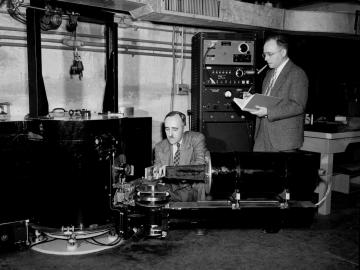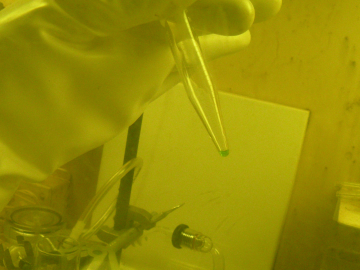Filter News
Area of Research
- (-) Neutron Science (13)
- Advanced Manufacturing (1)
- Biological Systems (1)
- Biology and Environment (6)
- Clean Energy (39)
- Computational Engineering (1)
- Computer Science (1)
- Fossil Energy (1)
- Fusion and Fission (5)
- Isotopes (3)
- Materials (29)
- Materials for Computing (6)
- National Security (3)
- Nuclear Science and Technology (3)
- Supercomputing (12)
- Transportation Systems (1)
News Type
Media Contacts

ASM International recently elected three researchers from ORNL as 2021 fellows. Selected were Beth Armstrong and Govindarajan Muralidharan, both from ORNL’s Material Sciences and Technology Division, and Andrew Payzant from the Neutron Scattering Division.

Scientists at ORNL and the University of Tennessee, Knoxville, have found a way to simultaneously increase the strength and ductility of an alloy by introducing tiny precipitates into its matrix and tuning their size and spacing.

The Department of Energy’s Office of Science has selected five Oak Ridge National Laboratory scientists for Early Career Research Program awards.

Using complementary computing calculations and neutron scattering techniques, researchers from the Department of Energy’s Oak Ridge and Lawrence Berkeley national laboratories and the University of California, Berkeley, discovered the existence of an elusive type of spin dynamics in a quantum mechanical system.

Scientists have found new, unexpected behaviors when SARS-CoV-2 – the virus that causes COVID-19 – encounters drugs known as inhibitors, which bind to certain components of the virus and block its ability to reproduce.

Ken Andersen has been named associate laboratory director for the Neutron Sciences Directorate, or NScD, at the Department of Energy’s Oak Ridge National Laboratory.

The COHERENT particle physics experiment at the Department of Energy’s Oak Ridge National Laboratory has firmly established the existence of a new kind of neutrino interaction.



The International Union of Pure and Applied Chemistry (IUPAC) Inorganic Chemistry Division has published a Provisional Recommendation for the names and symbols of the recently discovered superheavy elements 113, 115, 117, and 118.




